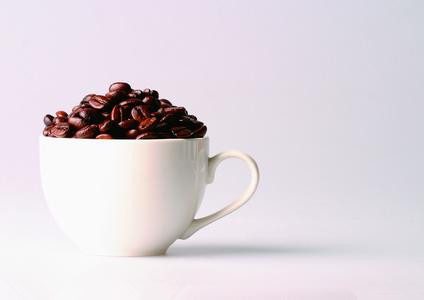Starbucks Analysis of Starbucks with knowledge of Cafe Management
In 2008, the financial crisis brought a wave of layoffs. A US website recently ranked Starbucks eighth in its 2008 list of US corporate layoffs with 600store closures and 12000 layoffs. In 2008, Starbucks closed its underperforming stores in the US. In January 2009, Starbucks spokesman DebTrevino announced that another 300 stores would be closed this year. According to March 2008 data, Starbucks closed about 915 stores this time, equivalent to 8 per cent of its total number of US chain stores (11434). However, this figure is not entirely correct. In her speech, DebTrevino quoted J.GanesConsulting founder JudithGanes-Chase at the American Special Coffee Association's annual fair in April last year: "the shift in the supply chain." she stressed that the media had exaggerated the news about the closure of Starbucks stores. In fact, Starbucks decided to close some of its stores before the recession. Starbucks' over-expansion of its stores in the United States has led to a deterioration of its operations. Starbucks has had to cut costs by reducing CEO DavidShultz's $1.2 million annual salary to $10, 000, reducing holidays and private holidays for employees, and launching promotions, such as credit card discounts for frequent visitors to Starbucks.

However, the closure of some stores in the United States does not represent Starbucks' global operations. Starbucks will continue to expand its foreign markets this year and plans to open 170 stores in China, Brazil, Russia and other countries. Currently, 20% of sales come from cities outside the United States. That figure is likely to grow as Starbucks shifts its focus to international markets and its new instant coffee products launch. In addition, Starbucks will also restructure and reorganize its stores in the United States to improve efficiency, while in other countries, Starbucks is still growing.
Net profit fell by more than 50%
According to Starbucks' 2008 financial results, its revenue for the year ended Sept. 28, 2008 was $10.4 billion, up 10.6% from $9.4 billion in 2007. But profitability is plummeting, with Starbucks' net surplus of $315.5 million, down more than 50 per cent from $672.6 million in 2007, according to the annual report. Earnings per share were only $0.43 in 2008, compared with $0.87 in 2007. Performance decline in addition to the decline in the profitability of individual stores, the restructuring of shop closures has also consumed a lot of money. Earnings per share could have reached $0.71 because about $0.28 per share was used to close underperforming stores. The restructuring costs add up to about $200 million.
Starbucks caters to different consumer groups in two different ways. For most customers, Starbucks is still the symbol of high-priced "boutique" coffee. Coffee owners in the market will also price their own coffee according to the price of Starbucks coffee. Cafes and restaurants around the world emulate Starbucks menus and jargon. All these show that the importance of Starbucks in the world coffee culture is undeniable. Many coffee lovers (or retailers) think that Starbucks is the birthplace of boutique coffee. Although this honor has been controversial, Starbucks has a wide influence on people's understanding of boutique coffee. The way Starbucks adjusts its strategy is interesting: it has changed the image of high-end "boutique" coffee, launched low-priced "boutique" coffee (instant coffee), and is working hard to promote the product, hoping to be recognized by consumers. However, consumers can now taste a cup of cheap "boutique" coffee wherever they are, even McDonald's. So how will Starbucks gain low-priced market share? And how can we make this "boutique" coffee no longer unknown? This is also the problem that Starbucks faces now.
Consumers who lack professional knowledge are the weakest link in the sale of boutique coffee-a cup of expensive boutique coffee, and its price positioning depends on its own value. Incredibly, coffee not only satisfies people's tastes, but also contains people's ethical and political perceptions, which vary from country to country, city, coffee shop and people. All because of the constant opportunity to taste a variety of coffee, so that consumers' tastes are constantly changing and vulnerable. How to drink fine coffee healthily? Baristas, roasters and coffee shop owners all have the obligation to introduce customers to the uniqueness and complexity of high-priced "boutique" coffee. The time, manner, skill, and preparation of drinking boutique coffee are all important. please remember that we are not just enjoying a cup of high-quality coffee. If consumers lack awareness of the culture of boutique coffee, they will think it is not worth paying for a cup of boutique coffee. Consumers' lack of knowledge of coffee makes them reluctant to go to coffee shops to taste high-end coffee, which has an impact on the market demand for boutique coffee, thus further worsening the economic instability of the coffee industry.
Important Notice :
前街咖啡 FrontStreet Coffee has moved to new addredd:
FrontStreet Coffee Address: 315,Donghua East Road,GuangZhou
Tel:020 38364473
- Prev

Are you ready to run a coffee shop?
Since I started coffee training, I have been in constant contact with friends who want to open a coffee shop. Many people come to study because they want to open a coffee shop. After accumulating experience and professional skills, they hope to open a coffee shop of their own. Many people say that if they want to open a coffee shop, they will go to the coffee shop to study, but they will not graduate to study at school. To be honest, I've never felt like working and studying in a cafe.
- Next

The method of tasting coffee in barista training class
I wanted to write a basic knowledge about coffee tasting a long time ago, but I couldn't get started. Do some common sense popularization in Chongqing Brista Coffee West Point training College. Very often, you will hear a lot of coffee lovers who don't know anything, so they can go to the store and yell, boss, do you have Blue Mountain Coffee? I drink Blue Mountain Coffee every day. There is also some coffee love.
Related
- What documents do you need to go through to open a coffee shop? coffee shop coffee shop certificate processing process
- How to purchase Coffee beans in small Cafe how to choose a suitable supplier for domestic Coffee supply Company
- How to drink Starbucks Fragrance White Coffee? how to make Australian White Coffee? what Italian coffee beans are recommended?
- The Story of Flora Coffee: the name of Flora Coffee Bean and the implication of the Flowers on Florna Coffee
- How much does a cup of coffee cost? How much is the profit of a cup of coffee? What is the profit of the coffee shop in a year?
- Yunnan small Coffee, known as "fragrant Coffee", introduces the characteristics of Alpine Arabica Coffee producing areas in Yunnan, China
- 2023 latest Starbucks full menu price list how much is a cup of Starbucks coffee what is better to drink the most popular hot and cold drinks recommended
- Starbucks different kinds of Coffee Price list Starbucks menu 2023 Top Ten Best drinks in Starbucks
- Starbucks Spring praise Comprehensive matching Coffee Bean theme Story Packaging implication and taste description
- The cost of a cup of coffee latte American coffee cost price and selling price

